E-Flite Mystique 2.9-Meter ARF
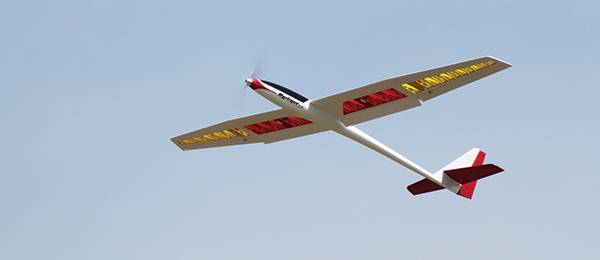
Article and flight video by Andrew Griffith This sailplane is ready for fun or competition. Full review on page 61 in the August 2013 issue of Model Aviation and the app.
SPECIFICATIONS Model type: Sailplane or electric sailplane Skill level: Intermediate builder; intermediate pilot Wingspan: 114 inches Wing area: 1,030 square inches Wing loading: 10 ounces per square foot Airfoil: Semisymmetrical (SD3021) Length: 58.5 inches Weight: 4 pounds, 8 ounces Power system: None or 25 to 52 electric Radio: Six-channel minimum (seven channels with glider programming recommended) Construction: Built-up wood wings and tail; fiberglass fuselage Covering/finish: UltraCote Street price: $369.95 TEST-MODEL DETAILS Motor/engine used: E-flite Power 25BL outrunner Battery: E-flite 3S 11.1-volt, 3,200 mAh 30 LiPo Propeller: 14 x 8 folding Radio system: JR 11X 2.4 GHz DSMX radio; AR7010 receiver; four Spektrum A7020 servos; two Spektrum A4020 servos Ready-to-fly weight: 4 pounds, 8 ounces Flight duration: Varies with skill and weather conditions Pluses: • Fiberglass fuselage. • Attractive translucent UltraCote covering on wings and tail. • Diverse flight envelope. • Perfect transition airplane for the many Radian and Radian Pro pilots looking to move to the next level. • Can be built as an electric launch or in a pure sailplane configuration. Minuses: • Manual has several problems and omissions. • Serious slop in elevator and rudder pushrods.
[All flight photos taken at the Radio Control Club of Jacksonville FL field.]
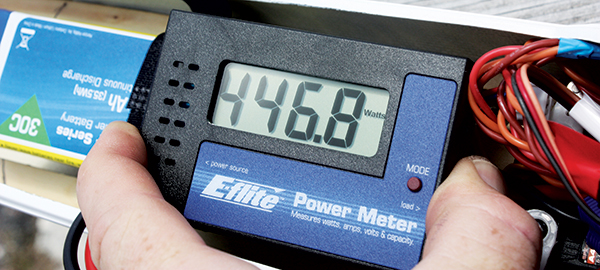 The E-flite Power Meter shows the system pulling nearly 450 watts at 39 amps at full throttle with a fresh battery.
The E-flite Power Meter shows the system pulling nearly 450 watts at 39 amps at full throttle with a fresh battery.
 The transparent red-and-yellow color scheme presents well against the blue Florida sky. The colors are easy to see against clouds.
The transparent red-and-yellow color scheme presents well against the blue Florida sky. The colors are easy to see against clouds.
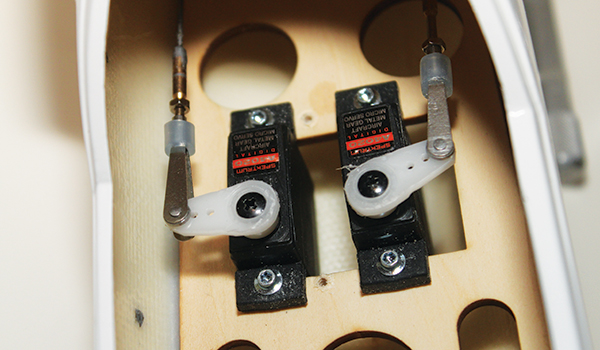 The Spektrum digital servos were installed using RTL Fasteners hex-head servo screws.
The Spektrum digital servos were installed using RTL Fasteners hex-head servo screws.
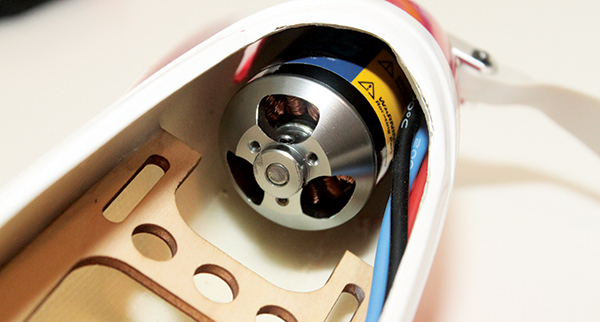 The E-flite Power 25 BL motor is installed in the business end of the Mystique. Ensure that the wires can’t rub the motor while it is rotating.
The E-flite Power 25 BL motor is installed in the business end of the Mystique. Ensure that the wires can’t rub the motor while it is rotating.
 The top-mounted flap linkage gives maximum mechanical advantage to prevent surface blowback during flight. The author slightly notched the TE to get more flap travel.
The top-mounted flap linkage gives maximum mechanical advantage to prevent surface blowback during flight. The author slightly notched the TE to get more flap travel.
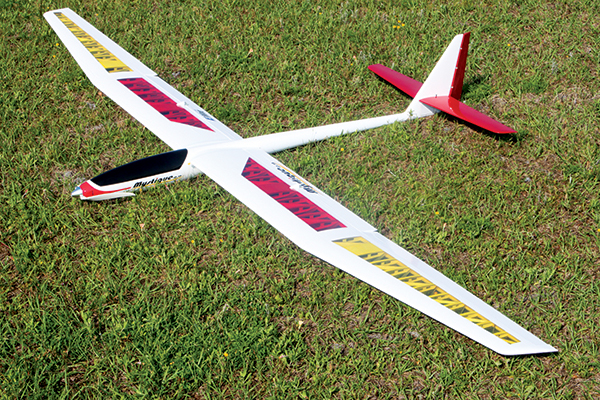 The Mystique is a nicely constructed, open-class sailplane that would be competitive in ALES or LMR events.
The Mystique is a nicely constructed, open-class sailplane that would be competitive in ALES or LMR events.










5 comments
2nd Coming of Sailplanes
This article on the Mystique
Mystique motor kv rating in the article
25 BL motor
Fitting wings to E-flite Mystique 2.9m ARF Sailplane
Add new comment